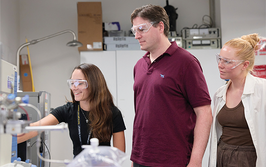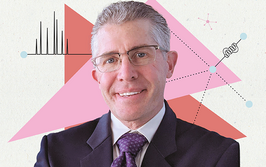Closing the anti-doping circus
Are the right questions being asked about substance abuse in sport? I say no, and suggest that the entire process might be abandoned.

Henk van ‘t Klooster
Alberto Contador, winner of the 2010 Tour de France, had to return his yellow jersey because clenbuterol was present in his urine. The amount found was 50 picograms per milliliter (1 pg = one millionth of a millionth of a gram). Clenbuterol was – and in certain parts of the world continues to be – used in the meat industry to promote the conversion of fat into muscle. Cyclists, swimmers, football players and other athletes use it for that purpose too, although it’s on the list of banned substances. Contador, however, has always denied using clenbuterol; his explanation is that he ate meat that contained the substance. So far, his defense has been in vain but the results of a recent study (
During the Under 17 world soccer championship in Mexico in 2011, researchers from the Dutch Wageningen Research Institute (RIKILT) were commissioned by soccer’s governing body, FIFA, to analyse meat samples from the kitchens of the hotels where the players were staying. In 14 of 47 samples, clenbuterol was detected, at amounts between 0.06 and 11 micrograms per kg. “That's not strange in Mexico,” says Saskia Sterk of RIKILT. At the same time, researchers from the Doping Lab of the German Sports University at Cologne analysed 109 of the 208 urine samples collected from the participating soccer players and found clenbuterol, ranging from 1 to 1556 picograms per milliliter.
Add to this previous work that established that nutritional supplements, such as the vitamins, minerals and proteins taken by many athletes, can be contaminated with anabolic steroids, which are also on the list of banned substances (
A huge amount of attention, energy and money has been focused on methods and procedures to demonstrate whether or not athletes have taken prohibited substances. It’s an anti-doping circus. And many questions persist, such as:
- Which substances should be banned?
- What are the criteria that support banning?
- On whose authority should decisions to ban substances be made?
- How should interactions between body chemicals and doping substances be taken into account?
- How should foods and food supplements contaminated with doping agents be handled?
- How can masking agents and methods be revealed?
- What are the criteria for unequivocally demonstrating abuse?
- How should research methods and procedures be validated?
Even given all these questions, there is one more that, in my opinion, deserves more attention still. It is this: how sharp are the boundaries between the effects of nutrients as constituents of foods and nutritional supplements – which athletes can use – and the effects of banned substances that are considered to be performance-enhancing? If these boundaries are as vague as I suspect, the whole tedious and costly anti-doping circus can be closed.
To what extent do banned doping agents enhance performance anyway? The former professional athlete and physician Harm Kuipers, who was Holland’s 1975 world champion in all-round skating and is now professor of kinesiology at Maastricht University, said in an interview about Lance Armstrong (
- M. Thevis, et al., “Adverse analytical findings with clenbuterol among U-17 soccer players attributed to food contamination issues”, Online Library Wiley, April 4, 2011 (http://onlinelibrary.wiley.com/doi/10.1002/dta.1471/abstract).
- Dietary Supplements Containing Prohibited Anabolic Agents, Medscape, 2011.(http://www.medscape.com/viewarticle/745220_4).
- Interview of Harm Kuipers by Jules Seegers, NRC.nl, October 23, 2012 (http://www.nrc.nl/nieuws/2012/10/23/er-is-geen-bewijs-dat-lance-daadwerkelijk-epo-heeft-gebruikt/).
Dr. Henk Van 't Klooster is a former director of the Analytical Chemical Laboratories Division of the National Institute of Public Health and the Environment in The Netherlands. Earlier, he was an associate professor of analytical chemistry and research leader of chemometrics at Utrecht University. Since 2000 he has been a consultant and coach of executives and managers, and owner of the management consultancy firm Vithaka.

















